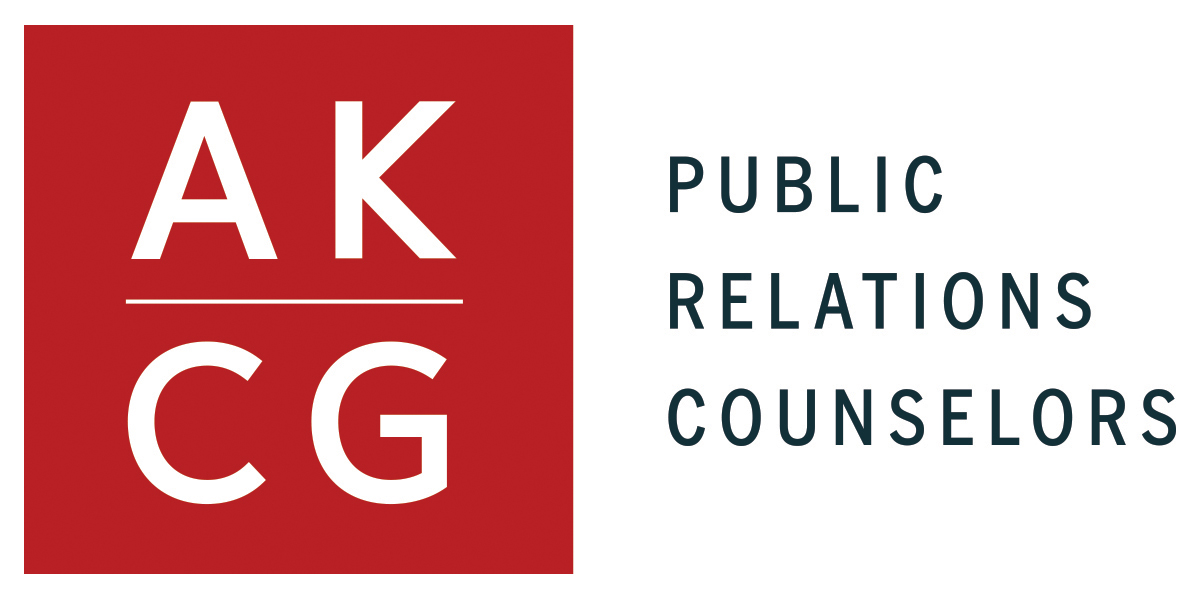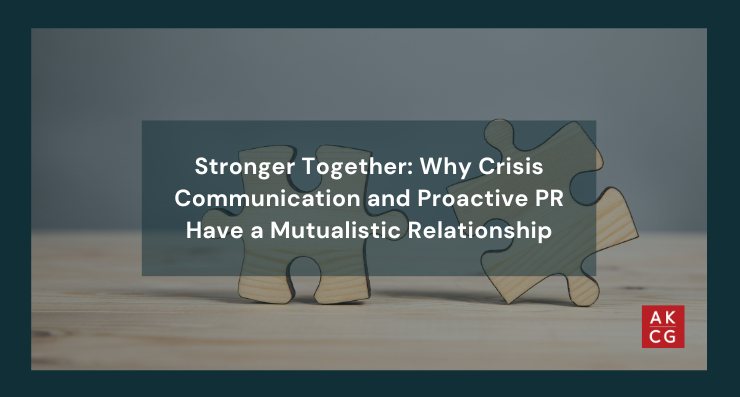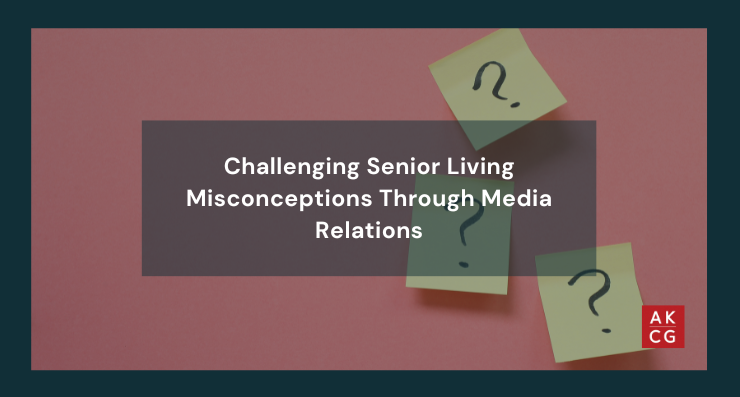It’s natural for organizations to want good publicity and strong relationships with their stakeholders and audiences – we all want to be well-liked and successful. However, every company will experience a crisis in its lifetime, no matter how hard its leadership and employees work to prevent it. It can be tempting to solely focus on positive, proactive communications and delay developing a crisis communication strategy. However, these forms of communication complement each other and can significantly advance your overall business goals.
In this article, we’ll discuss four reasons why crisis communications preparedness and proactive public relations should both have seats at the table.
Stakeholders should know your voice and values.
In today’s world, people make up their minds quickly. Several studies exist that examine how long it takes someone to form a first impression, and the responses range from one tenth of a second to 27 seconds. No matter the number, these answers tell us we don’t have long before a stranger decides who we are in their mind. This same sentiment stands for organizations and companies. If your organization is experiencing an issue and your stakeholders have no direct knowledge of your mission, values or voice, they can – and will – assign those for you based on that first impression.
Public relations, or the strategic communication process that builds mutually beneficial relationships between organizations and the public, is critical in establishing and protecting your reputation. Think back to a time when a celebrity or company experienced a public relations crisis. Depending on their reputation, the issue prompted either shock because it went against their known image, or it confirmed the notion that this is par for the course. Proactive communications allows you to create and shape your brand and image so your most important stakeholders don’t question your values when it matters most.
Your organization will be ready to respond when questions are asked – internally and externally.
Once you have a reputation to uphold and maintain, your words and actions must go hand-in-hand. Unfortunately, it doesn’t always matter that you took the right steps and reacted quickly if you leave people in the dark during critical moments.
Crisis communications is largely planning to be ready to carefully roll out important information during events you hope never happen. At AKCG, we define a crisis as anything that can affect the goodwill of your stakeholders or your bottom line. A crisis doesn’t have to be a large, public event or story that ends up in a news publication. It could be an internal issue that begins as conversations in a hallway or an innocuous social media message. However, if left unaddressed or ignored, it could grow into an issue that affects operations, finances, employee morale, trust or more.
By waiting for a crisis to occur before you develop a communications plan, it’s difficult to thoughtfully respond to criticism or questions in a way that doesn’t appear delayed, performative or inadequate.
A strategy can shift your organization out of a crisis management response.
Crises are uncomfortable – no organization or person enjoys being scrutinized. Often, the instinct is to try and make it “go away” as quickly as possible. Yet, if we don’t truly address the issue at hand, it’s likely to resurface in the future. Reputation management efforts should include not only how to build and protect your image and values, but also how to restore it once it’s questioned. Your timing, tone, topic, audience and many other factors should be carefully considered when following a negative event – whether it’s related to the crisis or not.
By focusing on both proactive PR efforts and crisis communications, you can ensure they work in tandem. If you properly address a crisis with words and actions in line with your values and continue forward with behavior that matches those values, the issue is contained and your future positive moments can be times for celebration, not opportunities for resurfaced accusations or questions.
Thought leadership is accelerated when you expect the unexpected.
In 2024, thought leadership is something we’ve all heard of. The rise in people’s ability to build personal brands that coincide with their business identity is in part due to the consistent growth in social media and the 24/7 news cycle. But what truly makes a thought leader? It is a person or business who stands out as an informed opinion leader in their respective fields of expertise. A thought leader has a unique outlook and stands by their beliefs, even if it’s not the popular opinion.
By definition, a thought leader needs to be prepared to defend or support their mission and message, especially when others question it. If they’re unable to do that, they can instantly lose credibility. When it comes to being a thought leader in your field, proactive PR can be the obvious choice. The strategy can focus on owned content in the form of social media posts, a website blog article and speaking engagements, as well as earned media like interviews. Despite these efforts, it’s not always enough to prepare only positive key message points and expect an enthusiastic response when sharing a new thought or idea. Crisis communications work propels thought leaders forward by preparing them to be calm, consistent and transparent when facing the inevitable doubt that will be directed at any person or organization that shares a new, unique way of thinking.
When thinking about how to better reach your stakeholders as you advance your mission, consider implementing strategies that include both proactive PR and crisis communication planning. If crafted thoughtfully and intentionally, these two strategies can set you up to have a firm reputation that can weather a storm and come back even stronger.




